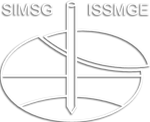The rigorous application of cavity expansion data
The rigorous application of cavity expansion data
The first commercially available pressuremeter test was developed by Louis Ménard in the late 1950s and was very successful in certain circumstances as a tool for foundation design. The Ménard method is a combination of pressuremeter specific measurements and empirical correlations. As early as 1961 it was realised that the same field data could be interpreted using basic mechanics, so that the test can be expressed as soil parameters for strength and limit pressure without the need for empiricism. Furthermore, if the resolution of the equipment was increased, it was possible to measure the sub-yield response of the material, assuming that probe itself could be introduced into the ground without significant alteration to the initial stress state. The self-boring pressuremeter was developed in the early 1970s to achieve these goals. There have been substantial advances in equipment, techniques and analysis since then, and this paper describes the current situation. The one property of the ground that the high resolution pressuremeter can provide in a repeatable manner without difficulty is shear modulus and the variation of modulus with strain and stress. This ability is now becoming widely acknowledged and is fundamental to the application of pressuremeter data.
John Hughes; Robert Whittle
8th International Symposium on Pressuremeters (ISP2025)
Site Characterization and parameter determination
